#1910s mantle
Text

Painting Illustration by Xavier Gosé, Le Manteau bleu, The Blue Mantle, 1912.
Morera. Museu d'Art Modern i Contemporani, Carrer Major, 31, 25007 Lleida, Spain
#Xavier Gosé#1912#the blue mantle#Xavier Gosé i Rovira#xavier gose#mantle#blue mantle#colors#beautiful colors#edwardian#Edwardian era#Edwardian fashion#la belle epoque#belle epoque#vintage#vintage illustrasjon#antique#antique illustration#Gosé#aigrette#cloak#1910s fashion#1910s mode#1910s illustrations#1910s mantle#art#spanish#spanish art#spanish fashion#art history
129 notes
·
View notes
Text

Light-mantled albatross
By: Unknown photographer
1913
100 notes
·
View notes
Photo

Le Petit écho de la mode, no. 48, vol. 38, 26 novembre 1916, Paris. Promenade d'Hiver. Ville de Paris / Bibliothèque Forney
Description:
No. 1. Manteau de velours forme redingote ample. Manche à épaulement sur un corps blousant. Ceinture en velours boutonnée de deux boutons. Collet en putois et manchon.
Haut chapeau de velours orné d’une bande en putois.
No. 1. Loose frock coat in velvet. Shoulder sleeve on a bloused body. Velvet belt buttoned with two buttons. Polecat collar and muff.
High velvet hat adorned with a polecat band.
Métrage: 4 m. 50 en 130.
—
No. 2. Grand manteau de drap de forme Raglan boutonné de boutons en drap. Forme droite et ample. Collier de vison. Poignets et bandes ainsi que le manchon en vison.
Grand chapeau en velours et en panne.
No. 2. Large Raglan cloth coat buttoned with cloth buttons. Straight and ample shape. Mink collar. Cuffs and bands as well as the sleeve in mink.
Large crushed velvet hat.
Métrage: 4 m. 50 en 130.
#Le Petit écho de la mode#20th century#1910s#1916#periodical#fashion#fashion plate#cover#retouch#description#Forney#dress#promenade#winter#mantle#cape#coat#frock#redingote#velvet#raglan#overcoat#collar
151 notes
·
View notes
Text
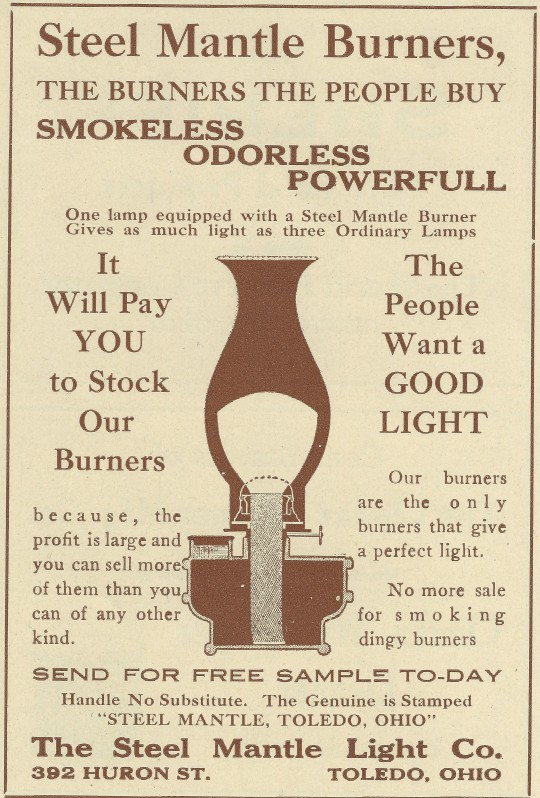
1914 The Steel Mantle Light Company Advertisement
#vintage#advertising#advertisement#vintage ads#antique#1910s#1914#oil lamp#kerosene lamp#the steel mantle light company#steel mantle
1 note
·
View note
Text





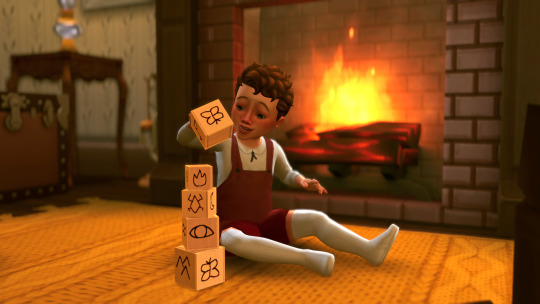




Autumn 1910
Autumn had well and truly arrived in Brindleton Bay. The trees were bedecked with fiery crowns as the maples blazed a shocking red; their last push of beauty before the slumber that winter brought.
At Sable Farm, the Sewell family was slightly preoccupied with other matters. Their second son, Freddy, had recently departed for Britechester to return to his schooling, leaving the family off-kilter from his absence, despite the short nature of his school holiday visit. The time had flown by at an alarming rate, as his mother, Violet, had been heard exclaiming mournfully no less than twice a day.
The evenings had a newfound chill to them, making a fire a welcome accompaniment to the evenings activities rather than an unpleasant necessity to endure as the summer cook fire often was.
The family was at leisure, Hamish reading an agricultural periodical, Violet knitting something for someone, Elsie diligently practicing her embroidery, little Charlie busily stacking his blocks as high as they would go, and Willy, absorbed in perfecting the wooden train set he was whittling for Charlie. Spot, Willy's dog, slept loyally at his feet, enjoying the warmth of the flames.
The little family did feel the absence of their missing member, made all the more obvious by the new family portrait hanging above the mantle. The portrait was courtesy of a newly established photography studio, nestled among the dockworker's housing at Tail's End. The Sewells were respected among the town and their patronage was somewhat expected at a location such as this.
With the success of their dairy, the family had sprung for a series of photos to commemorate their growing children. Violet was all too aware that in the blink of an eye, the remaining young ones would be grown and off to make their own way, and all she would have to remember them was her memory — and now, a portrait hanging above the mantle.
~~~~~~~~~~~~~~~~
next / previous / first
#we're back baby!!!!!!!!!#and it feels so good#missed these guys its been a year cannot believe it#ts4 decades challenge#decades challenge#sims 4 decades challenge#ts4 historical#sims 4 historical#sims 4 legacy#ts4 legacy#ts4 storytelling#sims 4 storytelling#sewell legacy#hamish sewell#violet sewell#william sewell#elizabeth sewell#charles sewell#spot sewell
119 notes
·
View notes
Text



I went to Indianapolis last week and brought these three Baker paintings home with me. I’m a sucker for Indiana impressionists.
George Herbert Baker (February 14, 1878 – March 11, 1943) was an American Impressionist artist who worked primarily in the Richmond, Indiana area and was a member of the "Richmond Group" of painters. He worked in oil, watercolor and pastels. He worked for a time in Brown County, Indiana and is sometimes associated with that group of artists.
Born in Muncie, Indiana, Baker lived in Richmond and Centerville most of his life. He studied with John Elwood Bundy, at the Cincinnati Art Academy and the Boothbay Art School. In 1925 he was a visiting instructor at Miami University.
His work is represented in the collections of the Indianapolis Museum of Art, Haan Mansion Museum of Indiana Art, Richmond Art Museum, Earlham College, Miami University Art Museum, Morrisson-Reeves Library, Centerville, Indiana Library and a devoted group of private collectors. A painting titled "November Meadows" painted during the time he was an instructor at Miami University hangs today over the mantle in the formal living room of the Miami president's home, Lewis Place. Wiki
George Baker (1878-1943) was born in Muncie, Indiana and moved to Richmond, Indiana in his early teens. Considered a brilliant colorist, Baker demonstrated artistic ability early in his life. This interest in drawing landed him a job at the Gaar-Scott Company where like Charles Conner; he painted scenes on farm equipment. The farm equipment could be decorated with anything from pinstripes to completed landscapes. It was Mr. Scott who introduced Baker to the dean of the Richmond Group, John Bundy. In addition to art instruction with Bundy, Baker studied at the Cincinnati Art Academy and at the Boothbay Art School, Maine.
Baker was a charter member of the Richmond Palette club, serving as the president of the organization. His was known for his landscapes of all seasons and moods, painting nature around Wayne County. His daring use of bold color led to rumors of alcoholism, yet these cannot be confirmed. When asked about his use of color Baker responded, “I don’t paint nature the way it is. I paint nature the way I wish it was.” Considered to be one of the finest landscape painters in Indiana, Baker was invited to serve as a visiting instructor for two semesters at Miami University, Oxford, Ohio in 1925.
Later in his career he worked in pastel and depicted marine scenes. Baker painted on the New England coast and in the mountains during the summer of 1931. In that same year, sixty oil paintings of Marine scenes and pastels were placed on display in the Westcott Hotel. He exhibited in Cincinnati, New York, Chicago, Detroit, Indianapolis and various cities throughout Indiana and Ohio winning numerous awards including the Howard Spaulding Jr. prize of $100 at the Hoosier Salon Exhibition, Nye Prize, 1930 and the Muncie Prize in 1910. Baker was a prominent local artist of his time and influenced many Hoosier artists. Artists that studied with Baker include Harry Townsend, Zeb E. Pottenger, Lawrence McConaha and Howard Leigh. Courtesy Wayne County website.
#my collection#early indiana art#richmond indiana#brown county#gh baker#George Herbert Baker#american impressionism#american painting#oil painting#oil on canvas
21 notes
·
View notes
Text
The Grand History Of Remnant: Prelude - The Technology Of The Great War
So, the little technology we've seen used during the Great War is a bit weird.
Mantle is depicted having rifles while the other kingdoms are still sticking with spears and shields.
Jaune's great grandad used a sword.
So it kind of appears like Remnant went from the 1500s to slightly futuristic technology in the span of about 80 years.
Somehow...
Yeah, no. This is going to be the biggest divergence from canon here, but I'm changing that to something a little bit more modern, and that makes a little bit more sense to me personally.
The technology is going to be somewhere from about the 1860s to the 1940s.
So,
And, of course, Mantle will be a little ahead of their time technologically.
17 notes
·
View notes
Photo

🔸 An elderly couple in Victorian Interior, Albury Street , Deptford, London. 1911. Probably a nice home for those times . Look how clean the fireplace is . There are all sorts of interesting objects in this room. What is that box by his right foot? And the glass container on the mantle ? #victorianchaps #edwardian #goodolddays #retro #vintage #oldphoto #london🇬🇧 #1910s #nostalgia #pastlives #history (at Deptford SE8) https://www.instagram.com/p/Co5i9NRjs5E/?igshid=NGJjMDIxMWI=
#victorianchaps#edwardian#goodolddays#retro#vintage#oldphoto#london🇬🇧#1910s#nostalgia#pastlives#history
13 notes
·
View notes
Text
Paul Poiret: The King of Fashion
“I am an artist, not a dressmaker.” - Paul Poiret
Born from very humble origins, Paul Poiret became one of the most influential French fashion designers of the early 20th century. During the 1910s, In the United States Poiret was called “The King of Fashion,” while the French referred to him as “Le Magnifique.” During his career, Paul Poiret both “established the canon of modern dress and developed the blueprint of the modern fashion industry”(1).
Poiret’s Early Career
Paul Poiret was born on April 10, 1879 in Les Halles, Paris, France (2) into the bourgeois Parisian family of Auguste Poiret, a cloth merchant. Young Paul received his education at a Roman Catholic school.(3) When young Paul’s education was complete, his father apprenticed him to an umbrella maker, however Paul found the work unsatisfactory.(2,3) On his own time, he worked on fashion designs and enjoyed making doll clothes out of cloth scraps from the umbrella shop.

Portrait of artist and designer Paul Poiret (c. 1913). Photographer unknown. Image source
“Poiret’s route into couture followed the common practice [at the time] of shopping around one’s drawings of original fashion designs. His efforts were rewarded in 1898, when the couturière Madeleine Chéruit bought twelve of his designs”(1). That same year designer, “Jacques Doucet, one of the most prominent couturiers in Paris”(1) hired Paul to work for him.(1) The first item Poiret designed for Doucet was “a simple red cape with gray lining and revers. (3)” The cloak sold over 400 copies. Within 4 years, at the age of 23, Poiret headed Doucet’s tailoring department.(3) During that time in Paris, a sure way to get your designs noticed was through the theater and Poiret’s breakthrough was a mantle of “black tulle over black taffeta painted with large-scale iris”(3) that he designed for “ the actress Réjane in a play called Zaza”(1). Poiret found his dramatic designs were well suited for the theater. He would continue to design theatrical costumes throughout his career.
Poiret Joins the House of Worth
After completing his military service in 1901, Poiret returned to Paris and became an assistant designer at “Worth, the top couture house”(3). There Poiret was assigned to design simple, serviceable clothes -- “what Jean Worth (grandson of the founder) called the ‘fried potatoes,’ meaning the side dish to Worth's main course of lavish evening and reception gowns…. For this Poiret felt looked down upon by his fellow designers, although his designs were commercial successes”(3). Adding to Poiret’s frustrations, Worth’s conservative clients found his clean, elegant designs as too modern, so in 1903 Poiret struck out and founded his own house.
“In 1905 [Poiret] married Denise Boulet, the daughter of a textile manufacturer, [her] waiflike figure and nonconventional looks would change the way he designed”(3). Boulet would serve as both Poiret’s model and muse. The couple would have five children together (2).
Paul Iribe Illustrates Poiret’s Fashions
The following year he would move his shop into 37, rue Pasquier.(3) In 1908 Poiret published a “limited edition deluxe album” of designs illustrated by artist Paul Iribe. Most fashion illustration of the time which showed models in traditional posed “against a muted ground, vaguely landscape or interior in feeling”(3); in contrast Iribe composed models in Poiret’s brightly colored fashions against black and white line drawn backgrounds, a technique which made the fashions pop from the page. Iribe’s work influenced fashion illustration and photograph for decades, and helped sensationalize Poiret’s designs.(3) The album also shows Poiret’s “attempt to cement the relationship between art and fashion”(1). By 1909 Poiret’s business had become so successful ,he moved to grander quarters at 9 avenue d'Antin.(3)
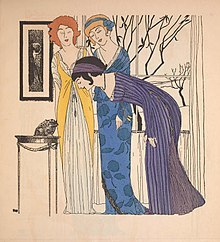
Paul Iribe, Illustration from Les Robes de Paul Poiret, p. 17, (1908). Image source.
Poiret’s Eastern Influences
Poiret found much of his inspiration in the past “notably to the Greek chiton, the Japanese kimono, and the North African and Middle Eastern caftan, Poiret advocated fashions cut along straight lines and constructed of rectangles”(1). His designs began to free women from the petticoat and later from the corset. In 1910, when a Ballet Russes production of Scheherazade was performed in Paris, Leon Bakst’s costumes and sets shook up the design world. “Whether inspired or reinforced by Bakst, certain near-Eastern effects: the softly ballooning legs, turbans, and the surplice neckline and tunic effect became Poiret signatures”(3). Poiret’s designs “shifted the emphasis away from the skills of tailoring to those based on the skills of draping. It was a radical departure from the couture traditions of the nineteenth century, which, like menswear…relied on…the precision of pattern making”(1).
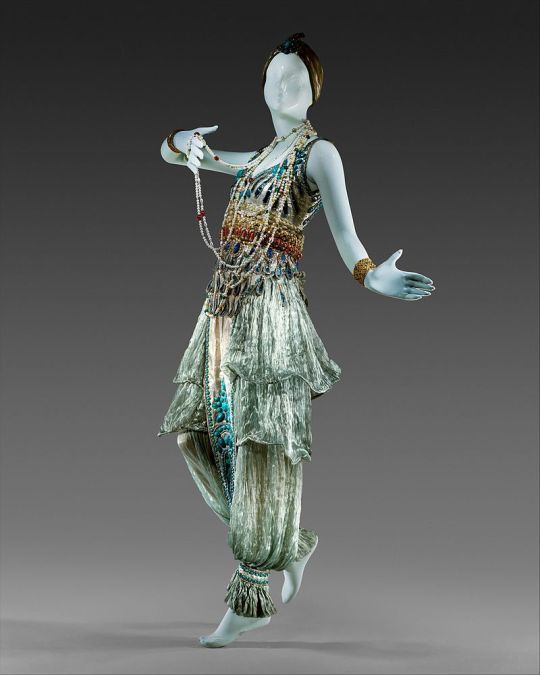
Paul Poiret, Eastern influenced costume with harem pants, (1911). Collection of the Metropolitan Museum. Image source.
Poiret’s Jupe-Culotte
In 1911 Poiret asked artist George Lepape, who had recently worked on a second album of Poiret’s designs, to develop an idea for a new design. Lepape and his wife created a sketch that would inspire one of Poiret’s most radical designs – the Jupe-Culotte. This garment consisted of a long tunic worn over pants gathered at the cuffs. While the design was revolutionary, in reality, it “was wildly unmodern, requiring the help of a maid to get in and out of and utterly impractical for anything other than looking au courant” (3). Poiret would continue to work on versions of the Jupe-Culotte. Some of those designs would eventually inspire the modern pantsuit.
Poiret’s Marketing Flair
Poiret’s genius as a designer was almost matched by his talent in marketing. During his time there were no runway shows, so Poiret toured Europe showing off his work. He also loved throwing parties where guests would be wearing his designs. “On 24 June 1911 the renowned 1,002-night ball was held in the avenue d'Antin garden featuring Paul Poiret as sultan and Denise Poiret as the sultan's favorite”(3). Madame Poiret was outfitted in her husband’s latest version of the Jupe-Culotte. Guests received invitations that instructed them to dress in Persian costume.(3)
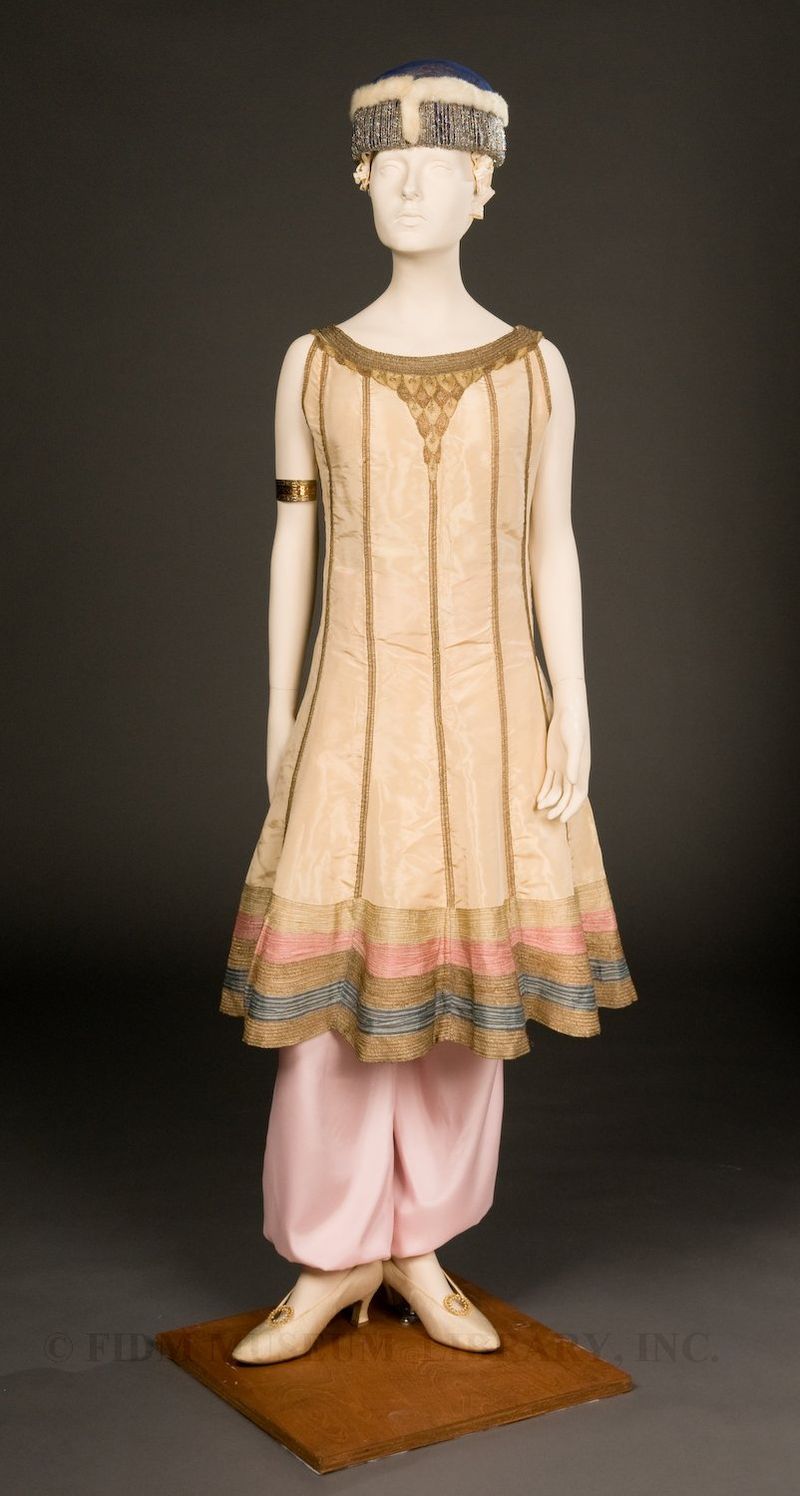
Paul Poiret, Tunic with Jupe-Culotte (1913). Collection of FIDMuseum. Image Source.
Les École Martine
In 1911 Poiret founded Les École Martine named after his second daughter. The school provided young working class Parisian women with design instruction and employment. “Poiret admitted to being inspired by his 1910 visit to the Wiener Werkstätte”(3). Through Les École Martine Poiret established his home décor line. Among the home furnishings his students designed were “richly colored gouache floral designs, created as samples for carpets in the early 1920s…. Poiret was not only ahead of his time in envisaging a brand universe in which furniture and fabrics were an integral part”(4).
Read Part Two of “Paul Poiret: King of Fashion.”
References
Koda, H. & Bolton, A., (September 2008). Paul Poiret (1879–1944). https://www.metmuseum.org/toah/hd/poir/hd_poir.htm
Wikipedia, (30 April, 2022). Paul Poiret. https://en.wikipedia.org/wiki/Paul_Poiret
Milbank, C.R., (2022). Paul Poiret. https://fashion-history.lovetoknow.com/fashion-clothing-industry/fashion-designers/paul-poiret
Menkes, S., (26 April, 2005). Liberty Belle: Poiret's Modernist Vision. https://www.nytimes.com/2005/04/26/style/liberty-belle-poirets-modernist-vision.html
Maison Schiaparelli, (n.d). Shocking life: A Homage to the Famous Firsts of a Legendary Couturiee. https://www.schiaparelli.com/en/21-place-vendome/the-life-of-elsa/
For Further Reading
Deslandres, Yvonne, with Dorothée Lalanne. Poiret Paul Poiret 1879-1944. New York: Rizzoli International, 1987.
Paul Poiret. King of Fashion: The Autobiography of Paul Poiret. Philadelphia and London: J. B. Lippincott, 1931
White, Palmer. Poiret. New York: Clarkson N. Potter Inc., 1973.
3 notes
·
View notes
Text
Hotels and settling in Cincinnati [part 2]
Continued from part 1
Fast forward to 1901 when RBM I and Hattie were 39 years old. That year on June 4, they had their only natural child: Stanley Sterling Mills. They were living in Cincinnati’s Hotel Sterling, which sat at Cincinnati’s West End at 6th and Central Streets. It does not exist anymore and has been torn down since. The Hotel Sterling housed the “only integrated nightclub in Cincinnati” called the Cotton Club (which was likely after his time) which was host to “hundreds of famous black orchestras and the rooms at the Sterling was usually booked solid”: [8]

This hotel was the same place that Bert, at 10 years old, wrote a note to Santa, just as soon as Stanley was about to be born, as noted in The Packard/Mills Family History. RBM I would stay in the management of the Hotel Sterling (circa 1900-1914?), followed by management of other hotels like the Gibson Hotel in the 1910s, and the Grand Hotel in the 1920s. [9] He was one of the founders of the Cincinnati Hotels Association on January 18, 1935, but he was a member of the Cincinnati Hotel and Restaurant Association in 1904, and a member of the patriotic group of “Ohio gentlemen” called the Ohio Society of New York attending an anniversary of the group in 1935 at the Hotel Pennsylvania chaired by Herbert Hoover, as a non-resident member. He even gave his 140 employees at the Grand Hotel a ten percent raise in their salaries at a Christmas dinner in 1922, while his adopted son, Bert, became an associate manager at the Ventura after his father became manager of the Gibson Hotel. He was also a manager of the Grand Hotel for the short period.
In 1910, Hattie, RBM I, Bert, and Stanley would all be living at the Hotel Sterling. There would be nine servants, with the average of age 36 and the average age of 37 boarders being 48 years old. [10] 64% of these boarders were from Ohio, with the rest from Kentucky, Massachusetts, Pennsylvania, and West Virginia. Very few are foreign boarders, but of those that were born in foreign countries they came from Scotland, Sweden, and Switzerland, among others. One of these borders was RBM I’s 52-year-old brother, Edward E. Mills, then living in Kentucky.
This was part of chapter 13 of a family history I sent to relatives. It is revised in order to remove all mentions of the Packards. In order to tell more of a story, it is reprinted here. It was originally published on the WordPress version of this blog in August 2018.
Hotel management, then, like now, was about accommodating travelers, making their institutions into “frontier between individual communities and the world beyond,” ensuring the safety of such individuals, and tempting guests to “emulate a higher standard of living.” [11] In the time that RBM I ran this hotel and others, the hotel industry began to be controlled by corporations. The automobile influenced the industry by fostering a “corresponding drive for standardization and scale.” Such hotel management embodied the “itch to...do something new, become someone new” with individuals as “builders, founders, risk takers,” which America supposedly represented. [12]
From the 1920s until the 1930s, RBM I was a hotel manager. As the story goes, every Sunday, Bert and Miriam (noted in the next chapter) would host RBM I and Hattie, who they hated, for dinner. The former were poor, with the job of fire chief originally low-paying, gaining money from the latter. To show their respect, they would put up Hattie and RBM I’s portrait on the mantle. After they left, they would shove the portrait in the closet. On June 18, 1950, RBM I died of coronary heart disease in Heath, Massachusetts. [13] The Cincinnati Enquirer would say he managed the “Sterling Hotel, Grand Hotel...Hotels Gibson and Sinton,” calling him a “prominent figure in Cincinnati hotel circles for 40 years,” with Hattie dying one year before. He was a member of Syrian Temple Shrine, Christ Episcopal Church, founding member of the Cincinnati Auto Club, and active in Chamber of Commerce of Cincinnati. He was buried, like Hattie, in Spring Grove Cemetery in Cincinnati.

Three different views of the Hotel Bennett, courtesy of All Posters, Houzz, and Card Cow. RBM I and Hattie likely met her as noted in the earlier family history. Binghamton, where this hotel was located, still exists and is within the “central Southern tier at the confluence of the Susquehanna and Chenago Rivers,” sitting a few miles north of the state line with Pennsylvania and midpoint “between the Empire State’s east-west borders.” By the time they met, the city of Binghamton had a huge cigar industry, employing 6,000 people in 1888, an even-bigger shoe industry, with Endicott-Johnson shoes employing 20,000 in the town, with the “computer”/time recording industry (precursor to IBM was in the town) and the growing photography industry. Other industries such as airplane and patent medicine industries either came later on or were not as prominent. Since the hotel or hospitality industry was not mentioned on the Binghamton City’s Historical Brief, it seems evident that this industry was not big in the town at the time. That still doesn’t invalidate his employment at the Hotel Bennett however, it just means that hotels were only part of a economy in the town, but not a major part.
© 2018-2023 Burkely Hermann. All rights reserved.
Notes
[8] Text courtesy of Dale Prout, Cincinnati Views. The original link seems gone (when you click on the link it says "page does not exist", but I did find a mention of it here and here on the current site. The only place that the original link I used is available is a page on the Wayback Machine, a page which also mentions the Grand Hotel, St. Nicholas Hotel, Hotel Broadway, and many others. Doing some digging, I also found a page noting Hotel Sinton, another for the Hotel Gibson, Hotel Alms, Plaza hotels, and various others here (Hotel Metropole, Hotel Havlin, Oxford Hotel, Palace Hotel, and others). As noted by the Urban League (in a link that cannot be found), “the original Cotton Club, in the Sterling Hotel, was the only integrated night club in Cincinnati and played host to the greatest black orchestras and performers of the era.” Many other meetings were held there. Even W.E.B. DuBois and Marcus Garvey met there in 1924.
[9] Williams Cincinnati Business Directory (Cincinnati, OH: Williams Directory Co. Publishers, 1909), 191, 244; Williams Cincinnati Business Directory (Cincinnati, OH: Williams Directory Co. Publishers, 1912), 949; Williams Cincinnati Business Directory (Cincinnati, OH: Williams Directory Co. Publishers, 1914), 938; Bizstanding, “THE CINCINNATI HOTELS ASSOCIATION,” accessed July 16, 2017; The Cincinnati Inquirer, Oct. 19, 1921, p. 7, courtesy of Newspapers.com; City Directories for Cincinnati Ohio, 1912, Hotel Alms, p. 949, courtesy of Fold3.com; The Cincinnati Inquirer, Jan. 11, 1954, p. 3, 5; The Hotel Monthly, 1922, Vol. 30, no. 347 (possibly), p. 66; Hotel World, 1922, Vol. 94, p. 13; Hotel Monthly, Vol. 94, no. 103, p. 50; Williams Cincinnati (Hamilton County, Ohio) City Directory (Cincinnati, OH: Williams Directory Co., 1922), p. 1927; “Mills,” Hotel World, Vol. 84, 1917, p. 43; “A New One,” Hotel World, Vol. 88, 1919, p. 13; Homepage, Ohio Society of New York (OSNY), 2017; OSNY, “Golden Jubliee Anniversary,” NY, Hotel Pennsylvania, Nov. 16, 1935, p. 1-2, 36-37. He would be treasurer and manager in varied hotels, proprietor of the Hotel Sterling from 1909 to 1914. Also see page 59 of the 1924 Book of Facts and Laws put out by the Ohio Hotels Association, page 66 of Hotel Monthly vol. 45 issued in 1937, page 949 of the Travel Book: Transportation International issued in 1931.
[10] Hotel Sterling in Cincinnati, 1910, U.S. Federal Census, ED 212, National Archives, NARA T624, roll 1193.
[11] The Gale Group, “Hotels and Hotel History,” Dictionary of American History, 2003, which seems to be only accessible as a database or book; Holly Cameron, “The History of Hotel & Restaurant Management,” USA Today, accessed on July 16, 2017; University of North Carolina, “Early Research and Treatment of Tuberculosis in the 19th Century,” 2007; Jan Whitaker, “The history of the restaurant of the future,” Restaurant-ing Through History, June 12, 2017; Waukesha County Technical College, “Hospitality Management,” 2022; WiseGeek, “What is Hospitality Management?,” Conjecture Corporation, 2017; Dominque Browning, “Gimme Shelter,” Sunday Book Review, New York Times, Dec. 2, 2007; Jeffrey S. Adler, The Hotel: An American History (review), Journal of Interdisciplinary History Vol. 39, No. 2, Autumn 2008, p. 290-291; A.K. Sandoval-Strausz, “How America Invented the Hotel: A history of hospitality,” Slate, 2007.
[12] Thomas A. Stewart, Alex Taylor lll, Peter Petre, and Brent Schlender, “The Businessman of the Century Henry Ford Alfred P. Sloan Tom Watson Jr. Bill Gates,” Fortune magazine, Nov. 22, 1999; United States Department of Labor, Bureau of Labor Statistics, “Lodging Managers,” Oct. 3, 2022; Institute of Culinary Education, “School of Hospitality and Hotel Management,” 2022; University of Missouri, “Hospitality Management Degree,” 2022; Pennsylvania State University, “Careers in Hospitality Management,” 2017; George Washington University, “Bachelor of Science in Business,” accessed Oct. 8, 2022. Also see Paul Groth’s Living Downtown: The History of Residential Hotels in the United States, Andrew K. Sandoval-Strausz’s Hotel: An American History; Karl B.Raitz and John Paul Jones III’s article “The City Hotel as Landscape Artifact and Community Symbol” and Andrew K. Sandoval-Strausz’s dissertation, “For the accommodation of strangers: urban space, travel, law, the market, and modernity at the American hotel, 1789-1908” (behind a paywall of sorts) in 2002. Sandoval-Strausz has written about hotels many times, as noted by a listing on Google Scholar, including articles like "Travelers, Strangers, and Jim Crow: Law, Public Accommodations, and Civil Rights in America", "The hotel in history: evolving perspectives", "A Public House for a New Republic: The Architecture of Accommodation and the American State, 1789-1809", and "Why the Hotel? Liberal Visions, Merchant Capital, Public Space, and the Creation of an American Institution".
[13] Massachusetts, Town and Vital Records, 1620-1988; The Cincinnati Enquirer, June 20, 1950, p. 25, courtesy of Newspapers.com. This falsely says that RBM II was adopted in 1934; RootsWeb, Obituary Daily Times, Ancestry.com; Gravestone of Robert Byron Mills; The Cincinnati Inquirer, Feb. 3, 1949, p. 30, 32, courtesy of Newspapers.com; The Cincinnati Inquirer, July 13, 1949, p. 29. He would die the same year as John Henry Packard, the son of Dora, his sister.
#hotel sterling#hotels#cincinnati ohio#ohio history#hotel management#genealogy#family history#ancestry#1901#1950#disease#fire chief#firefighters#1920s#1930s#1950s#1910s#wordpress#death#obituary#newspapers
0 notes
Photo
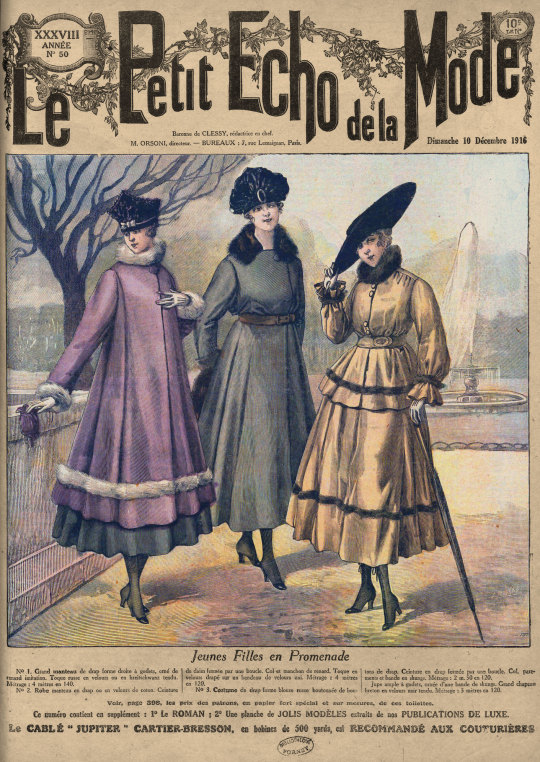
Le Petit écho de la mode, no. 50, vol. 38, 10 décembre 1916, Paris. Jeunes Filles en Promenade. Ville de Paris / Bibliothèque Forney
No. 1. Grand manteau de drap forme droite à godets, orné de renard imitation. Toque russe en velours ou en breitschwanz tendu.
No. 1. Large straight cloth coat with godets, decorated with imitation fox. Russian toque in velvet or stretched breitschwanz.
Métrage: 4 mètres en 140.
—
No. 2. Robe manteau en drap ou en velours de coton. Ceinture de daim fermée par une boucle. Col et manchon de renard. Toque en velours drapé sur un bandeau de velours uni.
No. 2. Coat dress in cloth or cotton velvet. Suede belt closed by a buckle. Fox collar and sleeve. Velvet toque draped over a plain velvet headband.
Métrage: 4 mètres en 120.
—
No. 3. Costume de drap forme blouse russe boutonnée de boutons de drap. Ceinture en drap fermée par une boucle. Col, parements et bande en skungs.
No. 3. Cloth suit in the form of a Russian blouse buttoned with cloth buttons. Cloth belt closed by a buckle. Collar, facings and band in skungs.
Métrage: 2 m. 50 en 120.
—
Jupe ample à godets, ornée d’une bande de skungs. Grand chapeau breton en velours noir tendu.
Full gored skirt, adorned with a band of skungs. Large Breton hat in stretched black velvet.
Métrage: 3 mètres en 120.
#Le Petit écho de la mode#20th century#1910s#1916#periodical#fashion#fashion plate#color#retouch#cover#Forney#description#dress#coat#overcoat#godets#toque#breitschwanz#mantle#cloth#cotton#fox#velvet#costume#suit#skungs#Breton#collar#purple
90 notes
·
View notes
Text
INTERESTING FACTS REVEALING THE TRUE IDENTITY OF INDIA'S 'PARTY OF PERENNIAL SUSPENDED ANIMATION' - THE CONGRESS PARTY! - WAS CREATION OF 'MAHATMA' A ORGANIC INDIAN THING, OR ENTIRELY MANUFACTURED BY BRITISH, AS A PUPPET DIVINITY, AS THEIR SHIELD FOR EMERGENCIES? -BRITAIN'S MOST LOYAL POLICEMAN!
A. Historian Kapil Kumar has official orders of British State Govt of Madhya Pradesh (then Central Provinces), from Sept 1938, 9 yrs before Independence, stating,
"HENCEFORTH, ALL DOCUMENTS SHALL REFER TO GANDHI AS 'MAHATMA' "
Incidentally, Feb 1938 is the momentous occasion when Subhas Chandra Bose (btw ,the first & only Indian politician to ever publicly challenge & put to vote Gandhi's rote Dominion status demand,in Cong's 1928 Convention), defeats Gandhi's candidate Sittaramaiah by a thumping margin to assume Presidentship of Congress for the first time, in the Congress Convention in Madhya Pradesh itself! ... Upon which Gandhi writes a infamous telegram to Bose who'd just returned after 5 yr forced exile in Europe, saying "Welcome Home. God give you strength to bear the weight of Jawaharlal's mantle". ..
Gandhi & Nehru, the 2 pre-decided blue-eyed boys, chosen ones of British Govt, were in Gandhi's head, the owners of Congress or what?
Too much to be coincidence all this, eh?
BTW, DID YOU KNOW THAT THE PRESIDENT OF THE CONGRESS PARTY (CONGRESS PARTY FORMED IN ~1886) IN 1910, AS ALSO IN 1889 BEFORE IT, WAS A BRITISH NATIONAL, A SECRETARY OF THE BRITISH GOVT ITSELF, SIR WILLIAM WEDDERBURN! ..... ALSO, THE CONGRESS PARTY WAS FOUNDED IN ~1886 ITSELF BY A SECRETARY TO THE BRITISH GOVT, A BRITISH NATIONAL NAMED SIR ALLAN HUME, WHO SAW 1857 AS A RESULT OF 'BRITISH MISGOVERNANCE', & SOUGHT TO SMOOTHEN BRITISH-INDIA TIES, VIA SUCH BRIDGES!
No colonial Govt would, quite clearly as seen here, go out of it’s way to deify the biggest leader of it’s slave nation, supposedly opposing such colonial rule, unless such person were actually subtly helping than harming their cause.
And 1st time they use this shield of theirs vs Bose, is as Bose wins re-election as Cong Prez defeating Gandhi's man in Nov 1939, when Gandhi publicly states "This is my defeat", & entire CWC, many of whom would've voted for Bose too, mysteriously mass resign, forcing Bose's ouster from Congress!
Bose then writes to his brother Sarat, "This latest phase of Gandhism with its sanctimonious hypocrisy, is sickening to a degree. One is forced to wonder which is a greater menace to India's political future-The British Bureaucracy or The Gandhian Hierarchy". ... Further writing, “The more I think of Congress politics, the more convinced I feel that in future we should devote more energy & time to fighting the High Command. If power goes into the hands of such mean, vindictive & unscrupulous persons when Swaraj is won, what will happen to the country! Another reason why we should fight them now is that they have no idea of national reconstruction. Gandhism will land free-India in a ditch - if free India is sought to be rebuilt on Gandhian, non-violent principles. India will then be offering a standing invitation to all predatory powers.”
That US's CIA/OSS in 1942, in their official internal documents, available with historian Anuj Dhar, confirms our logical belief to, stating 'British influences' infact caused this ouster of 1939 !
Further insight on these 'British Influences' in CIA report, over why Bose ousted from Cong in 1939 available below:
K.M. Munshi, Home Min Bombay, writes in his book, how was then sent with British Secret Intelligence Reports to Gandhi, over Bose meeting German officials when in Bombay in Dec 1938, and later contacting German Consul Calcutta, over an arrangement of German help in Indian freedom, in return for being able to rely on Bose if war broke out).
How can a ruling colonial power show sensitive top secret documents on India's national security, to a leader of the political outfit of a slave nation, supposedly meant to oppose such rule & bring freedom from it, unless knew such political outfit to be working in their favor & not harm. in other practical words, a political outfit designed to keep rebellious activity simmering yet never near any certain critical level, taking a leaf outta one of India's oldest idioms - "Saap bhi mar jaaye aur laathi bhi na toote".
And going with the ideology of Congress founder, Allan Hume, namely of looking at the strife of the subjects of a enslaved foreign nation as nothing but bad management by it's owners.
A small but seering eg of the above, presented below-
India's 1st Governor-General (changed only in name & not position from his earlier post as Viceroy, as you shall soon find) Mountbatten, in his book 'Reflections on The Transfer of Power & Jawaharlal Nehru', openly admits to his overlording position in so-called Fee India, narrating an incident when PM Nehru comes to him for mandatory approval over some critical legislation, reading which he instantly blurts "has the entire Cabinet gone crazy", hearing which Nehru quietly submits, "I have got the hint. The legislation shall not be passed", calls his Cabinet, relays the communique, & upon entire cabinet not relenting & beseeching him to get it signed, (indicating how it could only have been something very critical), roars "Mountbatten loves India as much as you & me. And his words, frankly, mean much more to me than all of you".
As if not more than enough, further revealing in his book, of events on the day of 'Transfer of Power', Aug 15, 1947, where per (Independence, as told to all India) protocols, was supposed to have The Union Jack lowered from the flagstaff & Independent India's tricolor hoisted in its place, & Mountbatten told Nehru "I will feel very sad if see the Union Jack getting lowered", to which Nehru replied, "We do not want anyone feeling sad today", & has the Tricolor hoisted on different pole parallel to The Union Jack instead!
Do you know THERE ARE NO PICTURES ANYWHERE, OF NEHRU HOISTING THE TRICOLOR OF AUG 15, 1947, TILL TODAY! .. AND WE NOW KNOW PRECISELY WHY!
Omg!
But Gandhi, before Nehru, as ‘the chosen one’ for this glamorous high profile duty, can be dated back to much before him landing in India.
Below are recounted just 2 brazen contradictory stands taken by the same man who made a name as the apostle of non-violence at all costs. Fist from his time in South Africa, & second much later when in India.
GANDHI - THE CUNNING POLITICIAN .
1. THE SOUTH AFRICAN GANDHI -
Shocked to find certain facts about Mahatma Gandhi, from a book titled 'The South African Gandhi', by Desai & Vahed, which has actual quotes from Mahatma Gandhi urging Indians to FIGHT for the British during the Boer war of WW1 when in South Africa, even more ghastly being the reasons purportedly advocated by him for the same, namely, "To give Indians an opportunity at a thorough training in actual warfare"!
https://www.youtube.com/watch?v=cZOmt7hmd-4
https://twitter.com/rishibagree/status/983600498166128641
__
Further corroborated by these articles, which speaks of the columns written by Mahatma Gandhi when in South Africa, advocating recruitment of soldiers, in the fight against black resistance there, people he went on to call "kaafirs"!
(And I'm sure the veracity of these info can be easily established given that it's core is based on actual newspaper editions)
IF TRUE, again corroborating the duplicitous bigotry, which comes across as a regular feature, esp as alleged by a certain section of society, in his politics.
http://www.mysteryofindia.com/2014/07/gandhi-was-racist-part-2.html
__
As also this historians' interview, unraveling several such document-verifiable & many own published letters & printed quotes-verifiable instances, allegedly per them exposing the same continuous duplicity.
https://www.youtube.com/watch?v=bIiY1xPxPtE
&
https://www.youtube.com/watch?v=eyRYKj1J_90
__
IF TRUE, this seems to expose all his later non-violent yrs in India, to be some sort of a sham, so as to keep British rulers in India safe from any local uprisings.
This, given all the rest of the findings we've already blogged on previously here.
https://tooter.in/IndieSole/posts/108611988817146626
https://tooter.in/IndieSole/posts/108887615159759044
https://tooter.in/IndieSole/posts/108941277554901650
___
( PS. When we critically appraise our pre-independence leaders, we ofcourse do not nullify their big sacrifice in going to jail for yrs, & several times so, alongside lakhs such freedom fighters.
Also in this context > https://www.youtube.com/watch?v=P4lQRX6Cxig&list=LL&index=3 )
But given the heavily contradictory intent displayed in past, try put things in perspective, ofcourse per our perspective based on info available till today, & if more facts disproving above info is brot to light, would be most happy to incorporate the same & amend our critique.
2. KHILAFAT...OF WHAT?
A key presentation, by noted historian Abhijit Chavda, on 'The Turkish origins of India's partition'.
Also clandestinely & indirectly, continuing to ask the same old qu, that has bothered onlookers for past 75 yrs- "Was Gandhi inherently a pro-Muslim or Muslim-biased British secularist"?
All revolving around the invasion & takeover by the great military general Mustafa Kemal ie Ataturk, of the Ottoman Caliphate ie the last of 4 Islamic Caliphates, Islamic Caliphates that ruled & overlorded over the combined region of South-Eastern Europe, North Africa & West Asia, for ~1300 yrs, from early 600's to early 1900's.
Gandhi was so seemingly agitated by this world event totally disconnected from his part of the world, that he pushed the entire Indian populace into opposing such a destruction of this supposedly revered Caliphate structure, that almost entire nation of India wasn't even aware of, infact a support that most Hindu accounts of the time divulge as having been procured on the sly, in guise of this "Khilafat (Urdu for 'Opposition') Movement" phrasology, making it sound like some routine anti-British movement.
Ironically enuf, twas Mr. Jinnah,a totally diff politician in 1920s to what associated with few yrs later by 1940s, who then opposed Gandhi,for unnecessarily dividing Indian masses along religious lines,& sowing hardline religious positions among the populace.
Yet twas blind following of Gandhi, that'd cruelly thrown Jinnah into wilderness,that forced him to change his soulful political style,into the conniving cunning ruthless politician of few yrs later,fashioned ala Ataturk, to be "Father of Pak",as Gandhi had become for Indians,& Mustafa Kemal for Turks.
Tis another matter,Kemal,totally transformed his nation,by disbanding every trace of previous Islamic structure,into one o' most curious nations ever-with completely Muslim popn,yet completely non-Islamic system. That's when,curiously enuf,Gandhi's oppn to it too stopped.
While Jinnah,based his partition,into Ind & Pak,solely along Islamic lines,& rule of Sharia law,only way for him to justify partition.And ofcourse none know what steps Mr. Jinnah could've taken,being true moderate secularist at heart,as most who knew him all his life vouch for,with dust settled,& his place in pantheon of world leaders permanently estd,to be more along Turkey's exalted lines,a nation he'd come to greatly admire by then,by every known acc,since passed away soon after Pak's founding..
But key contentions-
Why did Gandhi support Christian(Turk Ottoman was 1/3rd Chr)defense of Ottoman,but opposed Hindu defense to Muslim aggression in Ind,as seen many times?
Why was he openly in favor of Jinnah or Nehru for Ind's PM'ship,but opposed Patel tooth & nail,after Brits left?
If he was against violence,why volunteered Ind help to Brits in WWI,& not opposed the war as his morality demanded?
Pft.
https://www.youtube.com/watch?v=Erxm70VGjfE
3. THE QUIT INDIA "SHAM"-
Gandhi as an explanation (read apology) to the British for the violence after his arrest over his 1942 resolution over 'Quit India', which many believe to have been compulsively & competitively triggered, by Bose's moving radio broadcasts to the nation from Germany in 1942 , elucidates in late 1943-
a. The aim of Quit India resolution was to bring about conditions under which India could effectively participate in the war efforts of the Allies. Which would for most part mean the running over of Japan.
b. The Congress had no plan for any big movement. The only person authorized to start civil disobedience (Gandhiji) was arrested before he could issue any instructions. (So you see there was no technical call for 'Civil Disobedience' given by Gandhiji at all, a movement that has been tom-tommed in Indian history books to the hilt!)
And now for the mind-twisting clincher! :
c. Gandhiji had not asked for the physical withdrawal of the British from India. What he had asked for was the withdrawal of British power, not of individual Englishmen!
(Come to think of it, that's same as 'Transfer of power to Dominion of Britain' isn't it, which we finally got in 1947, that too only in part!)
4. THE "PRO-HARIJAN" FARCE !
Despite talking about 'Harijan upliftment' as a goal of Hindu life, there is not a single recorded statement of his in all 30+ yrs in India asking for the labor wage increase of ~99% of Harijans ie Farmers of India! On the contrary, in rallies like in Faizabad to protest clear blatant mass exploitation by landlords, publicly asks all the farmers to bear these atrocities, as "we are fighting a bigger landlord". Hah!
Similarly, another of many such stories,in official communique in AICC files,with historian Kapil Kumar,from 1931 Rae Bareli incident,when Cong District office bearer Kalka Prasad,is ousted from his post,by Nehru,designated to it via official letter by Gandhi,for "being irresponsible" in asking for illegally taken over farmlands by Talukdars to be returned back(via recorded silent sit-in protest btw).
Moreover, when the demand for a separate electorate for the depressed classes was raised in 2nd Round Table Conference in 1930, Harijans being foremost, a demand allowing then so-called Untouchables to have separate reserved constituencies, with Untouchable candidates to be selected by Untouchable voters from these seats to look specifically into their issues for alleviation, Gandhi rejected it outright, & refused to budge, even undertaking fast unto death, when after lotsa drama, agreed to a Poona Pact with Ambedkar next year in 1931, that too only to extent of allowing more representation for Untouchables in Legislature ie that these winning candidates didn't have to be from or have won from Untouchable constituencies but from anywhere & elected by anyone, most likely the 'modernized' Untouchable legislators from non-Harijan areas, reasonable to assume not as concerned about Harijan cause.
If ever a more anti-Harijan Harijan leader, than Gandhi!
Btw,a demand for separate electorate for Muslims, far from depressed class, of course agrees upon!
THE MOST FAMOUS ANTI-HINDU LEADER IN INDIAN HISTORY!
.
.
COMPARATIVE PRISON TREATMENTS:
(Furthermore, do you know that Gandhi would receive huge sums as prison allowance when in jail, ranging from Rs. 100/month in 1930, increased to Rs. 555 per month by 1943 when imprisoned in the Aga Khan Palace of all places no less! Also would have their own cooks in jail, for cooking special food per their physical necessity.
While Savarkar on the contrary was in Kala Pani jail, had each & every item of his house taken away from his family, with family made to literally beg on the streets of a society that was made to excommunicate them by the clever Congress aided ploy of tagging revolutionary freedom fighters as criminals. And in the 13 yrs of subsequent District arrest in Ratnagiri, had all his means of livelihood incl his degrees taken away from him, & only after long official written deliberations given Rs. 60 per month as family allowance when living with his wife & 3 children for a 8 yr period of that 13 yr house arrest (not jail), far far lesser than his contemporaries similarly house-arrested in Bengal too btw.
>
https://www.youtube.com/watch?v=nC2wbEXB7W0
>
https://www.youtube.com/watch?v=nC2wbEXB7W0
)
>
https://www.youtube.com/watch?v=nC2wbEXB7W0
)

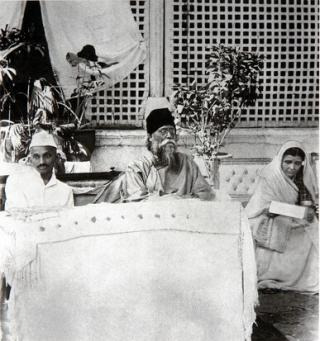




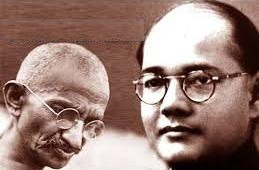
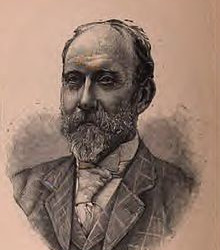







1 note
·
View note
Text
Top Attractions To Visit near Monsey, NY
Introduction
Monsey is a borough in Rockland County, New York, United States. The population was 14,072 at the 2010 census. Monsey is home to a large Hasidic Jewish community known as Kiryas Joel, which comprises about 80% of the residents of Monsey.

The Monsey Scenic Drive
The Monsey Scenic Drive is a road that runs through the heart of Monsey. The drive offers many attractions and activities, including walking, biking, and bird watching. It's also worth noting that this scenic route is a great place to take photos!
Kaser Park and the Ilanot Forest Preserve
Kaser Park is a great place to walk, bike, and enjoy nature. The park has many trails for hikers and bicyclists that are open year-round. There are also playgrounds for children to play on. In addition, there is an ice skating rink in wintertime!
Ilanot Forest Preserve is another amazing park located on Route 306 near Monsey's border with New City (it's actually closer to New City). This beautiful preserve offers hiking trails throughout its 200 acres of land as well as an observation deck overlooking Bear Mountain State Park at one end of it.
Kiryas Joel Museum
Kiryas Joel Museum is a museum in Kiryas Joel, New York. The museum has a collection of Judaica, including manuscripts and printed books from the 16th century to the present day. It also houses an extensive collection of Torah scrolls, Torah mantles, and tallitot dating back several hundred years.
The museum is operated by the Kiryas Joel Historical Society (KJHS), which was founded in 1984 as an independent non-profit organization dedicated to preserving the history of this unique community while promoting understanding between Jews and non-Jews through education programs related to Jewish culture and heritage
Kiryas Joel Synagogue
Kiryas Joel is a Hasidic village in Orange County, New York. The village was founded by Rabbi Joel Teitelbaum (1910-1979), who was the spiritual leader of the Satmar Hasidic group until his death in 1979. Kiryas Joel has its own school system and other amenities including shopping centers, restaurants, and medical facilities.
Kiryas Joel Synagogue is the largest synagogue in the United States with a capacity for over 5,000 worshippers at one time; it was built in 1980 on eight acres of land donated by Rabbi Teitelbaum himself for this purpose alone!
Monsey
Monsey is a hamlet and census-designated place (CDP) in Ramapo Town, Rockland County, New York, United States. The population was 10,836 at the 2010 census. Monsey is a Hasidic Jewish community. Monsey is part of the Town of Ramapo, and its residents are served by Ramapo Central School District. Monsey is located in the eastern part of Rockland County, New York State, approximately 45 miles north of Manhattan.
Kaser
Kaser is a hamlet in Ramapo, Rockland County, New York, United States. It is located north of Airmont and south of Hillburn. The name is derived from the Yiddish word for a grove of trees. The hamlet has a population of about 900 people. The area is served by the Spring Valley Central School District and is located within the boundaries of Ramapo High School, Suffern Middle School, and Airmont Elementary School.
Conclusion
If you're looking for a fun-filled day trip, then we recommend the Monsey Scenic Drive. This scenic route will take you through some of the most beautiful parts of Rockland County and give you an opportunity to see some amazing landmarks along the way!

Rockland Locksmith
Rockland Locksmith is a full-service locksmith in Wayne, NJ. We offer 24/7 emergency locksmith service, residential and commercial lock installation, and repair, as well as rekeying services. We are known for being the best locksmith in Wayne, NJ, and surrounding communities. Our locksmith technicians are experienced, reliable, and professional. We provide honest, accurate estimates before we begin any work and offer competitive rates on all our services. You may find us online using these keywords Rockland Locksmith, Ramapo locksmith, car key locksmith new city, locksmith Monsey, car locksmith, and locksmith Rockland county.
Jerusalem Auto Locksmith
104 Saddle River Rd, Monsey, NY 10952, United States
845-413-6123
1 note
·
View note
Text
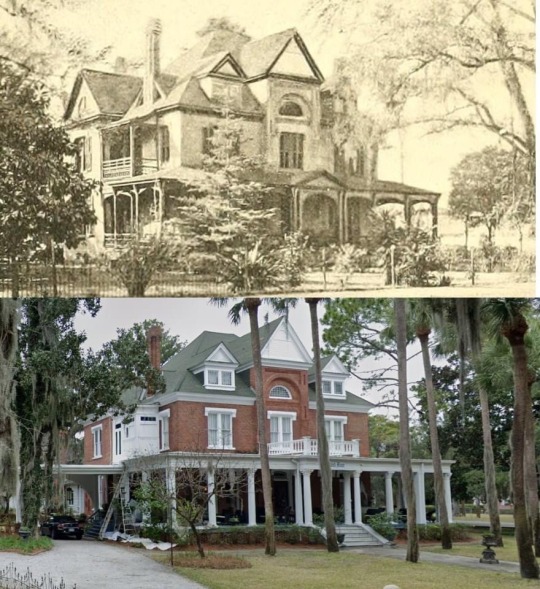
#TBT courtesy of Golden Isles History:
Brunswick Manor, 1902 and NowBrunswick Manor at 825 Egmont is also known as the Columbia Downing House. The home was built in 1886 for Major Columbia Downing (1845-1924). Downing was a big booster for commercial and residential development and chartered the National Bank of Brunswick in 1884. In 1890, he founded the Downing Company, a naval stores factor. The home was designed by Alfred Eichberg, who also designed Brunswick’s Old City Hall and Temple Beth Tefiloh.In the 1902 photo, the original veranda is visible out front. This was replaced around 1910 with the more grand current veranda which includes Greek revival columns. The upstairs porch was also enclosed as a bathroom in the 20th century.The home was renovated in 2009 and still contains many of its original details including wood flooring throughout, mantles with beveled glass mirrors, and stained glass transom windows. The foyer entry boasts the original carved oak staircase as well. It is on the National Register of Historic Places.
Historic photo sourced from a 1902 Board of Trade advertisement booklet of Brunswick and Glynn County, Georgia
Via Facebook
0 notes
Photo

Mantle by Paul Poiret, 1919.
44 notes
·
View notes
Text
Severus: “I have the feeling your mother didn’t like me.”
Evelyn: “Nonsense. Of course she liked you!”
S.: “Love, she welcomed me into her house with a 1910s IRA mauser riffle mounted on the wall over the mantle and quaint stories of how many English soldiers her grandfather snipped with it.”
E: “Exactly.”
S: “So that’s just how she expresses affection normaly?”
E.: “Trust me on this, Sev. She liked you. The last time she had a problem with a boyfriend of mine, that riffle didn´t *stay* on the wall.”
S: o.O
E.: :)
S: “Your father was a brave man, God rest his soul...”
24 notes
·
View notes